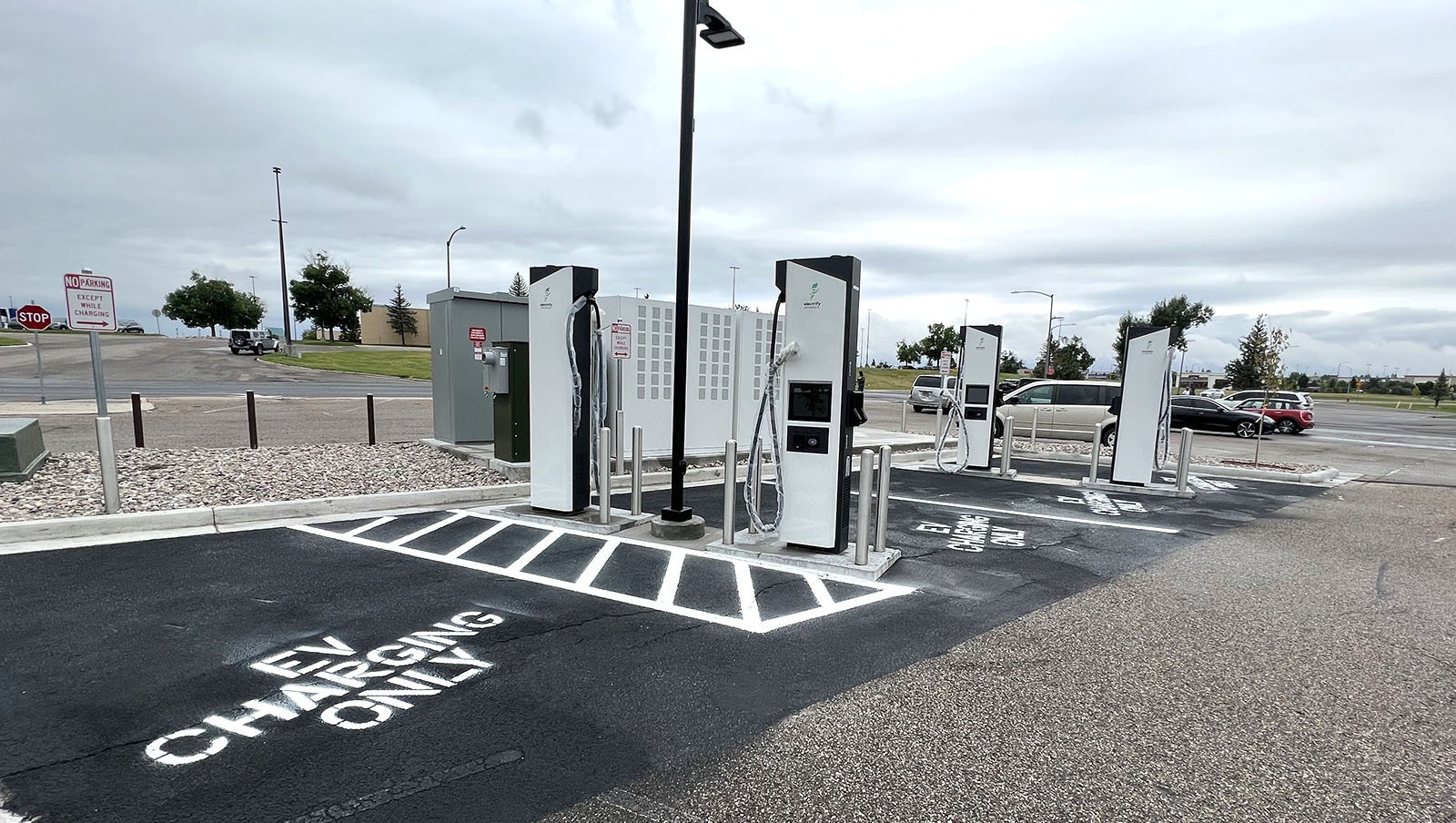There’s a mad dash to build out electric vehicle charging station infrastructure as more EVs appear on America’s roads. But the pace of the construction may be too quick for the technology.
A new survey from J.D. Power shows that satisfaction with Level 2 charging has decreased since last year, and that drop is even greater for direct current fast chargers.
The survey finds a number of problems EV drivers encounter when trying to charge, including chargers being inoperable and long lines.
Wyoming had applied for federal money that would pay for new charging stations and help fill some gaps in charging availability along interstates.
But anticipating potential issues down the road, the Wyoming Department of Transportation is holding off on issuing the requests for proposals (RFP) until it gets some clarification on the questions.
Can’t Get No ...
According to the survey, 20% of all users visited a charging station but didn’t charge their vehicles. Long lines and broken chargers were the primary reasons. In Colorado, 22% of EV drivers reported unreliable charging stations.
Some EV drivers also are dissatisfied with the time it takes to charge their vehicles. This is most true for Level 2 chargers, which are a step down from direct current (DC) fast chargers. Satisfaction with Level 2 chargers decreased 36 points from last year’s survey.
The DC fast chargers, however, also saw a drop in satisfaction over last year of 30 points.
This could become more of a problem as consumers buy larger electric vehicles. Recently, Ford CEO Jim Farley took a road trip in the Ford F-150 Lightning, the electric version of the popular pickup, and was surprised to learn that a Level 2 charge of 40 minutes gave him only a 40% charge.
The survey suggests this problem could be helped by locating charging stations near restaurants and retail outlets.
Electrify America
Electrify America had the second worst rating for customer satisfaction with its Level 2 chargers and the worst rating for DC fast chargers.
Cheyenne resident and EV enthusiast Jason Bloomberg told Cowboy State Daily the company has been in the process of opening a Level 3 charger at the Cheyenne Target for two years. After 18 months, charging technology had advanced, so they tore the chargers out and put in updated ones. It’s still not open.
Electrify America operates four Wyoming charging stations in Evanston, Gillette, Casper and Rawlins.
Octavio Navarro, spokesperson for Electrify America, told Cowboy State Daily that the Cheyenne station is anticipated to open next month.
“There are many stakeholders involved in bringing charging stations online, from design process to permitting to construction and energization,” Navarro said.
Navarro said the company is focused on delivering convenient and reliable DC charging for its customers.
The company has grown rapidly. In 2022, it provided 5.2 million charging sessions, up from 1.45 million in 2021, he said.
“With this rapid growth in demand for charging services, this report [the J.D. Power survey] highlights some of the headwinds for the industry as a whole and that no one company can do it alone,” Navarro said, adding that the company values customer data and insights.
Tesla Experience
Bloomberg said that the charging experience for Tesla drivers is entirely different. They have access to the Tesla Superchargers.
The J.D. Power survey rated Tesla drivers as the most satisfied with public charging stations.
Bloomberg recently took a 5,233-mile road trip in his Tesla, and he didn’t encounter any inoperable chargers.
“If you want to have consistent convenience for doing trips across the United States or into Canada, they have the most reliable, robust and plentiful high-speed charging network with anybody,” he said.
He said the majority of EV manufacturers in the U.S. use the CCS standard, unlike the Tesla connector. So the federal program that Wyoming is pursuing will largely provide charging options for the 30% of EVs that aren’t Teslas.
“There isn't much need for subsidizing Tesla because, from the beginning, they were building out charging infrastructure as part of their original plan,” Bloomberg said.
Revenue Shortfall
The National Electric Vehicle Infrastructure (NEVI) Program provides $24 million in federal funding to build 17 charging stations over five years in Wyoming.
The program requires a 20% match from private businesses, which would build and operate the stations. The feds will kick in money to support the stations’ operations for up to five years. The program requires no state money.
WYDOT became concerned that if the stations were abandoned after the five years of federal support, the state would be on the hook for removing them.
In March, the department completed an analysis of profitability over five years for stations in Wheatland, Laramie, Buffalo, Pine Bluffs, Sheridan, Sundance and Douglas.
“As a result of the very low usage estimates, all of the seven sites are expected to have a significant revenue shortfall over the five-year period once commissioned,” the report concluded.
Holding Pattern
Jordan Young, a spokesperson for WYDOT, told Cowboy State Daily the department has received answers for some of its questions, but it still hasn’t received answers for all the questions it needs to proceed with issuing RFPs.
Keith Fulton, WYDOT assistant chief for engineering and planning, told Cowboy State Daily that the department is looking to see if states that have proceeded with the program — Ohio, Pennsylvania and Hawaii — run into any problems as they execute their buildout.
“We still plan on releasing the RFPs, but we’re still kind of on a holding pattern,” Fulton said.
One of the rules of the program is that the stations maintain 97% reliability rates, meaning they are only down 3% of the time. So, hopefully stations built with support from the program won’t have problems that so many stations are having.





